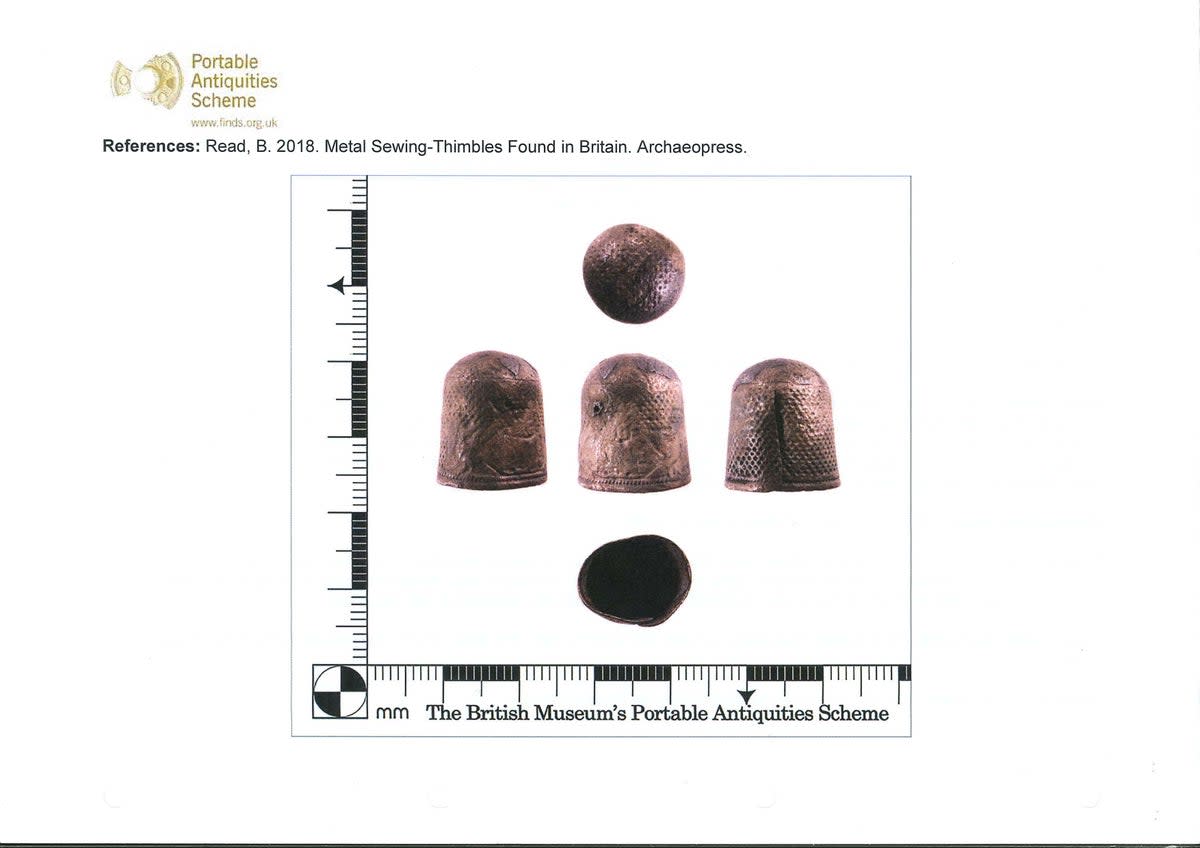Detectorist discovers centuries-old silver thimble 'treasure' in Thames

A centuries-old silver thimble found washed up on the banks of the River Thames by a metal detectorist is on its way to the British Museum after being declared as a historic treasure.
Vadims Haritonovs was scouring the river banks close to the Houses of Parliament in Westminster with his detecting equipment in February last year when he came across the thimble.
The Chelsea resident reported the find, and an expert has now estimated that the thimble comes from a period between 1640 and 1720, covering the Stuart era in British history.
At Westminster coroner’s court this week, Coroner Jean Harkin conducted a hearing to formally declare the item a treasure which could be worthy of preservation.
It is now being sent to the British Museum to consider if it should be put on display or preserved, or whether it should be returned to Mr Haritonovs to keep.
Treasure hunters in England – as depicted in the hit BBC comedy Detectorists - are legally obliged to report each significant find to a local coroner’s office, for an adjudication on its future.
If an item is more than 300 years old and made of more than 10 per cent precious metal, it qualifies as treasure and must be offered for sale to a museum under the term of the 1996 Treasure Act.
Mr Haritonovs’ thimble was assessed by an expert from the Portable Antiquities Scheme, who determined it dated from the 17th or 18th Century.
“Mr Haritonovs found the object while metal detecting in the Thames Foreshore,” said Ms Harkin.
“The object is a worn post-Medieval silver thimble dating from the 17th or 18th Century. It is made from one sheet of silver.”
The coroner identified markings on the 2cm-high thimble, that it had been “squashed at the base”, and it once carried an inscription that is no longer legible.
“The legality of the find is that it was on land where he was there legally as a metal detector”, added the coroner.
“Due to the fact the object satisfies the provisions of age and precious metal content, I therefore conclude this is treasure.”
Coroners who are more used to investigating deaths also conducting so-called ‘treasure inquests’ as part of their official role.
The hearings, which have been held for centuries, determine the fate of precious historic artefacts.
In 2022, there were more than 53,000 reported archaeological finds and around 1,300 treasure discoveries in England, Wales, and Northern Ireland – a record-breaking year.
Last July, the rules were updated so that items at least 200 years old and made partly of precious metals could be declared treasures – expanding even further the number of potentially cases to be considered by the nation’s coroners.


